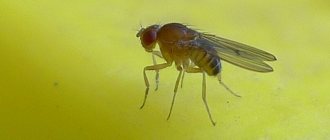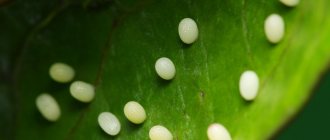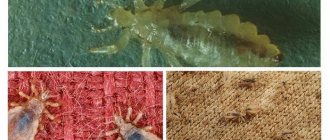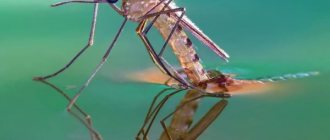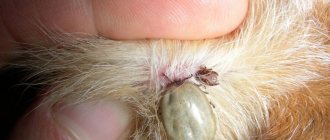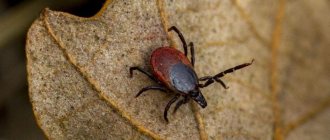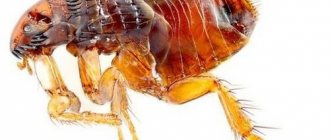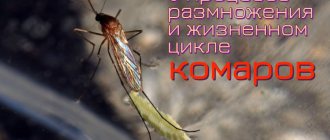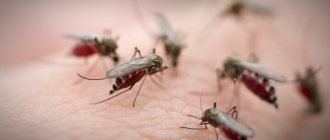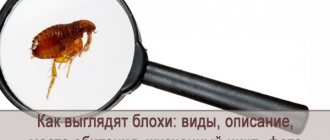General information
The arachnid has many varieties and is distributed everywhere. Adults rarely reach a size of 3 mm, average values vary between 0.1−0.5 mm. The female tick does not have a long body. She has it even a little shorter than the male. Some people mistakenly believe that tick larva and nymph are two names for the same developmental stage.
Adults have 4 pairs of legs, while juveniles have fewer. Depending on the structure of the body, leathery and hard varieties are distinguished. The former are characterized by complete fusion of the head and chest, breathe through the skin and trachea, the latter have a shell, and the head is movably attached to the body, breathing is carried out using special spiracles.
A distinctive feature of the arachnid is the absence of eyes. They navigate in space through a developed sensory apparatus, which allows them to sense the smell of the victim at a distance of up to 10 meters.
There is a classification depending on the way arachnids feed. There are two large groups:
- Saprophages feed on organic debris. They are considered useful and participate in the formation of humus. There are separate subspecies that harm plants, agricultural crops, flour and grain reserves. Saprophages include dust, arachnoid, flour, granary, subcutaneous, and ear saprophages. The last two species parasitize the human body and cause significant discomfort.
- Predators parasitize plants, animals, and humans. When attached to the victim, they crawl under the skin with the help of their paws and detach only after saturation. They can remain on the victim for quite a long time. The bite can be dangerous.
Both species are often found in human homes and at work, cause significant harm, and are difficult to remove.
Prevention
You should adhere to strict hygiene rules, change towels daily, iron pillowcases, disinfect your razor, glasses, and thoroughly wash personal items that come into contact with your face (scarves, handkerchiefs). This is especially important during treatment to prevent infection of other family members.
Never use other people's cosmetics and personal hygiene products. Do not dry yourself with someone else's towel or handkerchief. Keep the room clean, wash bedding frequently and drain pillowcases.
If you have already suffered from an illness, be attentive to your health. The slightest problems can provoke the resumption of demodicosis.
It is better to start treatment at an early stage, then there will be no complications and good results can be achieved in combating the parasite. To increase the protective functions of the body, a balanced diet, exercise, and walks in the fresh air are necessary.
Taking vitamin complexes in the autumn and winter, eating fresh fruits and vegetables will help boost immunity and improve the condition of the skin and increase its protective functions.
Types of parasites
In nature there are more than 40 thousand species of arachnids. Scientists divide them into 2 superorders: parasitiforms and acariforms. The former include ixodidae, argasaceae, gamasidae, nuttaliaceae, the latter include freshwater, armored, acaridia, feather, marine, scabies, thyroglyphoid, sarcoptiformes.
These are not all varieties, but the most popular. Each type has its own characteristics and differences:
- Ixodid ticks are the most common. They are distinguished by a shell covered with hard plates, often reaching 2.5 cm in length, which is considered almost a record among all species. They live in places with a temperate climate, prefer to constantly be in foliage and grass, and become more active with the arrival of the first warm days after a long winter. The life cycle of ixodid ticks is no different from other individuals. Females are very fertile and can lay up to 17 thousand eggs per season. They parasitize humans or animals and can feed on the blood of the victim for up to 3 weeks.
- Argas arachnids are characterized by a soft body, a small head that is almost invisible. They are of normal size and parasitize birds and animals. Sometimes they attack a person, the bite is painful, causing a rash and irritation.
- The armored variety lives on trees and soil, is small in size, and has a solid body. It does not attack humans; it feeds on carrion, mushrooms, and plants. It poses a threat to domestic animals because it carries helminth eggs.
- The gamasid mite lives in the burrows of rats and mice, parasitizes them, as well as poultry. It is small in size and lives up to 6 months. Produces toxic saliva that causes irritation when it comes into contact with the skin of birds and rodents.
- The subcutaneous species poses a threat to humans and animals. It parasitizes under the skin for several years, consuming dead epidermal cells as food. It reproduces quickly; viable tick nymphs appear 2-3 days after laying eggs.
Such species are common and cause harm to animals, humans, and agriculture. They differ in that they are difficult to remove.
Scabies lesions
Foci of the disease are family and collective.
- The leading factor in the epidemiology of scabies is the family outbreak. In 90% of cases of disease, the pathogen is introduced into the family by one of its members, much less often - by relatives and friends who do not live in the family. The primary sources of infection in family outbreaks are persons aged 17–35 years, most often children and husbands. In half of sick adults, infection occurs through sexual contact. The direct route of infection (contact with a patient) is the main one. Indirect transmission of infection (through household items and bedding) occurs in 13% of cases.
- Organized communities in which scabies can be transmitted are divided into two groups. The first group includes groups where people have common bedrooms (orphanages, dormitories, boarding schools, etc.). The incidence of scabies in such groups is two times lower than in families.
The second group includes teams where all members are in contact with each other during the daytime (kindergartens, schools, secondary and higher educational institutions, work collectives). Collectives of the second group do not pose an epidemiological danger.
Family outbreaks of scabies are the main sources of patients in society.
Other types
There are other types of parasites. The scabies mite is a common one. Causes scabies in humans and animals. Life expectancy is no more than 6 weeks. During this period, the female can lay many eggs, which turn into nymphs quite quickly.
Ear mites do not pose a threat to humans. It mainly harms animals. It lives in the auricle, feeds on its secretions, causing severe itching, irritation and inflammation.
Scratch infections often occur. The dust species often lives in blankets and pillows. It does not parasitize humans; it feeds on dead skin cells, accumulations of dust and fluff. Life expectancy is 4 months. During a season, a female can lay more than 35 thousand eggs. It often provokes the development of asthma in a person.
Spider mites are safe for animals and humans; they are herbivores and feed on plant juices. The only danger of this species is the spread of gray rot, which is destructive to plants. The marine species does not threaten animals or humans; it parasitizes marine life. Lives in salt and fresh water, in stagnant bodies of water. The predatory tick poses a danger to any other species, since it feeds on its relatives. Sometimes such individuals are specially introduced into greenhouses to destroy the harmful spider species.
The granary or flour species does not pose a threat to humans, unlike the blood-sucking species. It is considered a serious pest; it can destroy grain reserves, contaminating them with waste products. The pasture parasite is dangerous to humans and animals. Lives in forests, sometimes in the steppe, near populated areas. Carries serious diseases, for example, plague, fever, encephalitis, brucellosis. Animals are also threatened by dog ticks, which live everywhere and cause serious discomfort.
Varroatosis: infection of bees
The Varroa mite has spread to every continent except Australia. Without human help, infected bee colonies usually die within 3 years.
